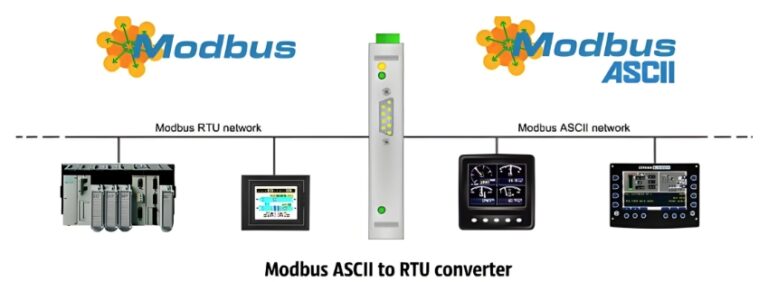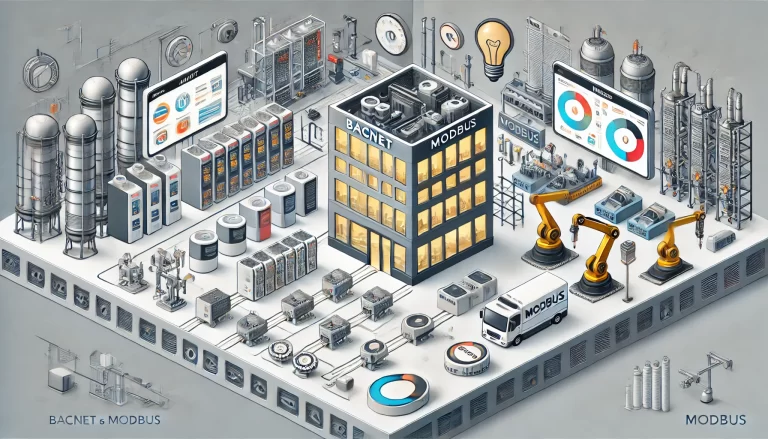In the realm of automation, choosing the right communication protocol is crucial for ensuring system compatibility, reliability, and cost efficiency. While BACnet is widely used in building automation systems, Modbus remains the dominant protocol in industrial automation. This article explores both protocols, compares their features, and explains why Modbus is often the preferred solution in industrial control applications.

What is BACnet?
BACnet (Building Automation and Control Network) is a communication protocol developed by the American Society of Heating, Refrigerating and Air-Conditioning Engineers (ASHRAE). It is designed specifically for building automation systems such as HVAC, lighting, access control, and fire detection.
Key features of BACnet include:
Object-Oriented Design: BACnet uses a standardized object model that allows different devices to share data and services in a consistent way.
Flexible Networking: It supports various physical and network layers such as Ethernet, MS/TP (based on RS-485), ARCNET, and IP-based communication.
High Interoperability: Devices from different manufacturers can work seamlessly together.
Security Features: BACnet includes encryption and authentication mechanisms to enhance cybersecurity.
What is Modbus?
Modbus is a simple, robust communication protocol originally developed by Modicon (now part of Schneider Electric) in 1979 for industrial automation systems. It has since become a de facto standard in many industrial applications.
Key features of Modbus include:
Variants: Modbus RTU (over RS-485), Modbus ASCII, and Modbus TCP/IP.
Register-Based Communication: Data is exchanged via registers using address mapping.
Master-Slave Architecture: Ideal for structured, deterministic communication.
Ease of Use: Simple implementation makes it widely supported across many industrial devices.

Comparison Table: BACnet vs. Modbus
| Feature | BACnet | Modbus |
|---|---|---|
| Application Field | Building Automation (HVAC, lighting, security) | Industrial Automation (manufacturing, process control) |
| Data Model | Object-oriented | Register-based |
| Network Topology | Star, bus, ring, etc. | Master-slave |
| Communication Protocols | IPv4/IPv6, MS/TP, ARCNET, PTP, etc. | RTU, ASCII, TCP/IP |
| Interoperability | High, across multi-vendor systems | Moderate, often requires gateways |
| Security | Strong (encryption, authentication) | Weak (especially in RTU and ASCII) |
| Standards Body | ASHRAE | Modicon / Schneider Electric |
| Complexity | High, due to object model and services | Low, simple and lightweight |
Why Modbus is Preferred in Industrial Automation
Although BACnet excels in building management applications, Modbus is more suitable for industrial environments for several important reasons:
Simplicity: Modbus is easy to implement and understand, reducing development and troubleshooting time.
Maturity and Adoption: With decades of use, Modbus is well-established and supported by most PLCs, sensors, and HMIs.
Cost Efficiency: No licensing fees and wide availability of Modbus-compatible devices lead to lower integration costs.
Reliable Communication: The master-slave architecture ensures reliable, deterministic communication—essential for industrial processes.
Ecosystem Compatibility: Modbus is almost a universal language in industrial control, making it easy to integrate components from different suppliers.
Adequate Security for Closed Systems: For isolated or internal control networks, Modbus’s simplicity is often sufficient.

Conclusion
While both BACnet and Modbus serve their respective domains effectively, Modbus remains the first choice in industrial automation due to its simplicity, cost-effectiveness, and robust ecosystem support. In environments where real-time control, minimal configuration, and broad device compatibility are priorities, Modbus provides a time-tested and practical solution.
